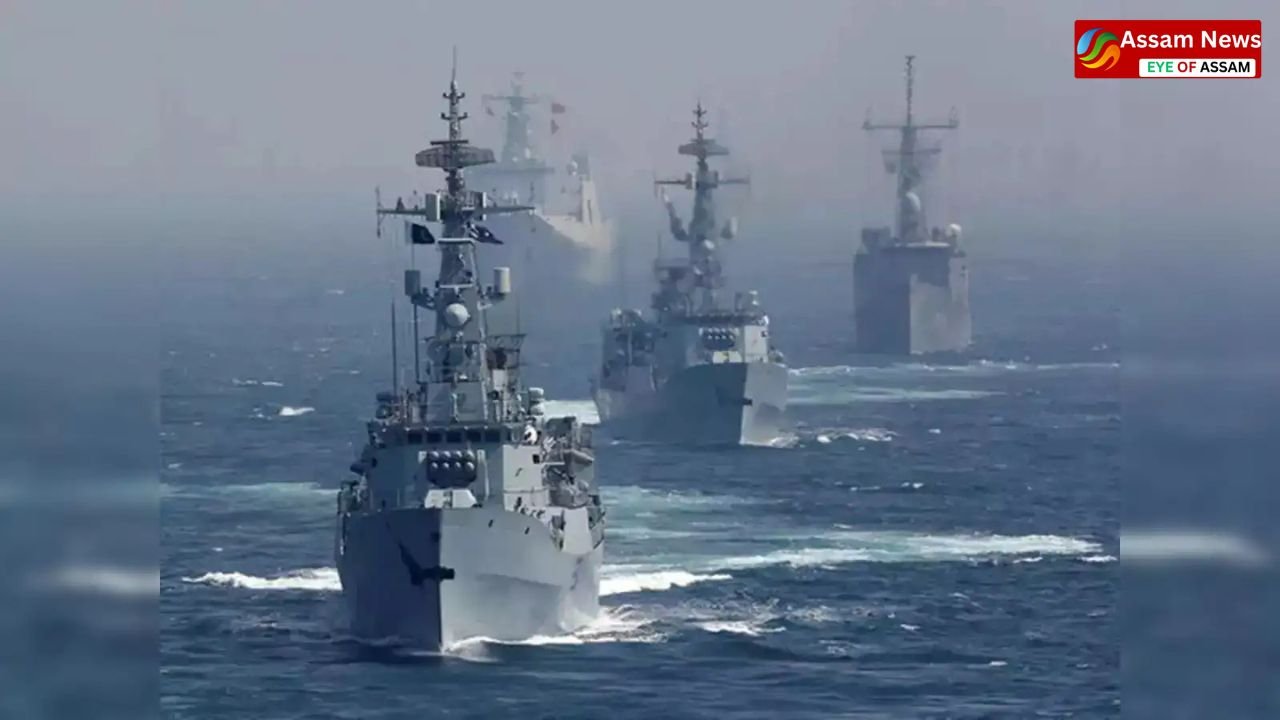Indian Navy X Post: The terrorist attack in Pahalgam, Jammu and Kashmir on 22 April shook the entire country. 26 innocent people lost their lives in this painful attack. After this, India started taking strict steps against Pakistan. Pakistan had not yet recovered from India’s retaliation that the Indian Navy showed its strength through a powerful post on the social media platform X (earlier Twitter). A post was made from the official handle of the Indian Navy @IndiannavyMedia, which read, “Fuelling the Maritime Might – No mission too distant, No Sea too vast”. Also, the post had hashtags like #FleetSupport and #AnytimeAnywhereAnyhow. These were not just words but it was a strong message that India is now ready on every front.
Meaning and indication of the Navy’s post
This post was not just a motivational message but there was strategic thinking hidden behind it. The responsibility for this attack was taken by ‘The Resistance Front’ (TRF), which is a terrorist organization directly linked to Lashkar-e-Taiba. After this, India not only suspended the Indus Water Treaty but also temporarily closed the Attari-Wagah border and expelled Pakistani diplomats. In such an environment, this post of the Navy makes it clear that all three forces of India are fully alert and are capable of responding to any kind of challenge even from the sea route. “FleetSupport” used in the hashtags shows the capability of the Navy’s logistics i.e. supply and support system, while “AnytimeAnywhereAnyhow” tells that India is ready to take action at any time, at any place, in any situation.
Fuelling the Maritime Might – No mission too distant, No Sea too vast#FleetSupport #AnytimeAnywhereAnyhow pic.twitter.com/p4Dk7Qzw27
— IN (@IndiannavyMedia) April 30, 2025
Increasing preparations of Indian Navy
After the Pahalgam attack, the Indian Navy has also strengthened its preparations. Recently, the Indian Navy successfully test fired a 70 km range Medium Range Surface-to-Air Missile from the indigenously built guided missile destroyer INS Surat. This test was conducted in the Arabian Sea and its aim was to make maritime security more powerful. Apart from this, the Indian Navy also conducted several anti-ship firing drills with missile systems like Brahmos. All these actions show that the Indian Navy has the ability to attack with precision from long distances and is fully prepared to surprise the enemy. This is not just preparation but a strategic signal that India is ready to deal with any maritime attack or threats.
Role and strategic balance of INS Vikrant
One of the biggest strengths of the Indian Navy is its indigenous aircraft carrier INS Vikrant. This warship not only protects India’s maritime borders but also symbolizes India’s maritime strategic power. The modern radar system, fighter jet deployment capability and state-of-the-art weapons present in INS Vikrant make it ready for war at any time. India now has such warships and missiles that can attack with precision even by penetrating the enemy’s territory. This sends a clear message that India is now ready to adopt not only a defensive but also an offensive strategy. Attacks like Pahalgam will be answered not just in words but in concrete action and the Indian Navy is at the forefront for this.







